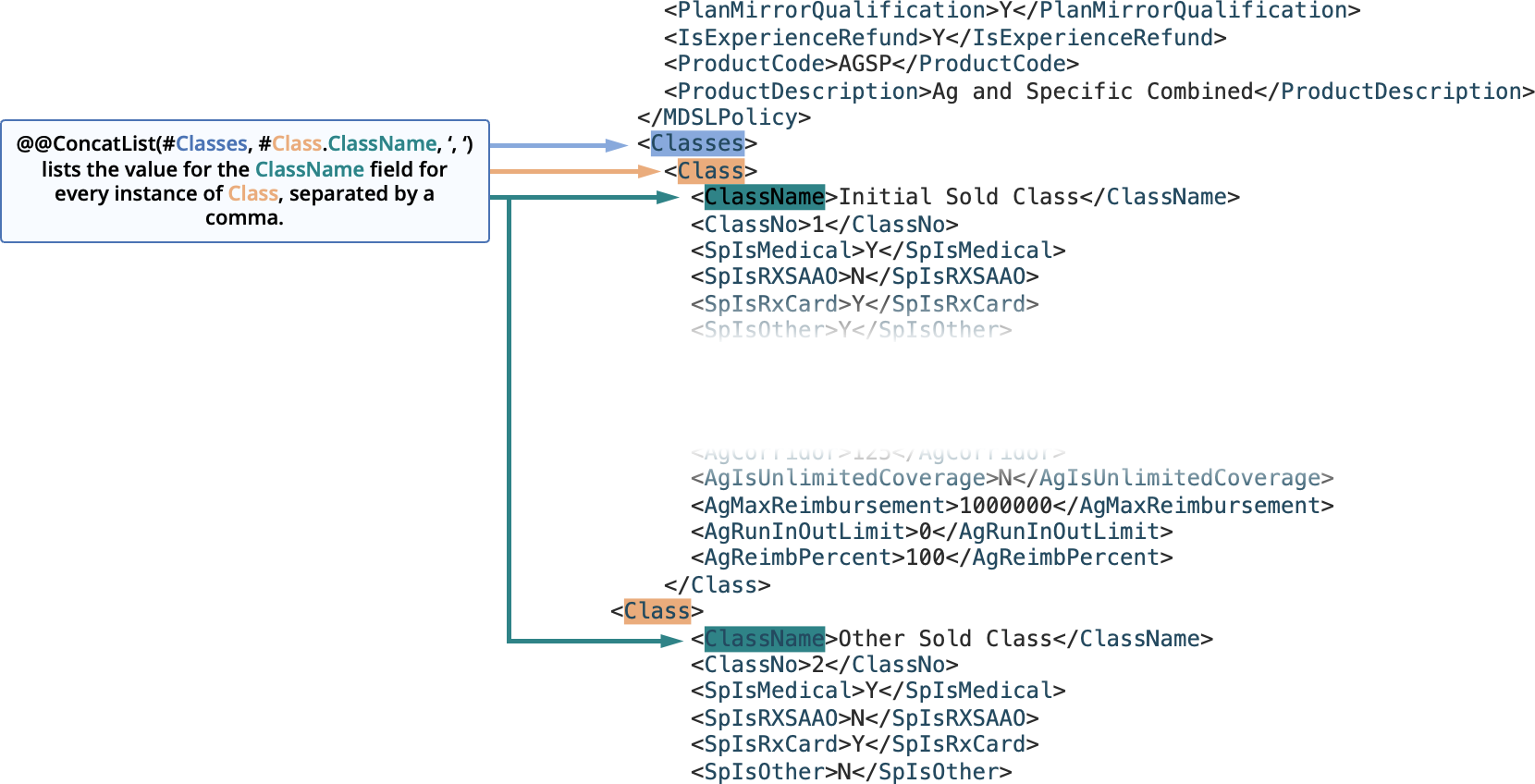@@ConcatList
Use @@ConcatList when you want to list tokens from a dataset containing multiple nodes of the same name, in a single line, with a specified separator.

Syntax:
@@ConcatList(<dataset>, <node>.<fieldname>, <separator>, <test>)
Parameters:
The dataset containing the nodes with the fields you want to concatenate.
The node and field within the dataset whose value you want to concatenate into a single, delimited line. When referencing a list made using @@AddToList, there is no node, and field name is Item.
The character you want to use to separate items in your concatenated list. You can use the following separators:
- Comma
- Semicolon
- Colon
- Dash
- Forward Slash
- Period
- Space
Any test you want to apply to the statement. You can test on a token. Referenced fields in the specified dataset are only concatenated when this condition is true.
When testing on a string (non-numeric value), enclose the data in single quotes. When testing on a number, do not use single quotes.
Use Or and And for testing multiple conditions. Or evaluates to true when any of the conditions are true. And evaluates to true only when all of the conditions are true.
You can use any of the following tests.
equals
does not equal
less than (only allowed with numeric data)
greater than (only allowed with numeric data)
Example
@@ConcatList(#Classes, #Class.ClassName, ‘, ‘, #Classes.Class.SpIsMedical = ‘Y’)
Places the class name for each class in your xml record on a single line, separated by a comma, when that class includes Specific medical coverage.